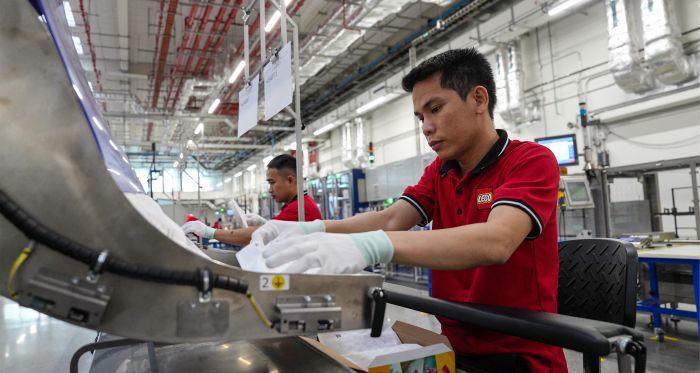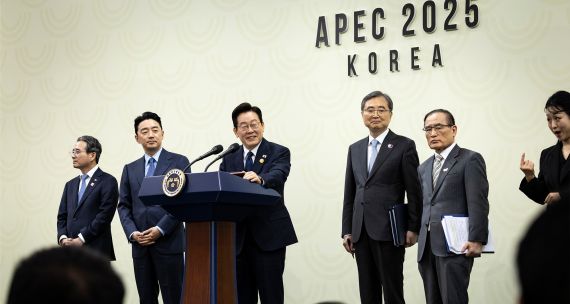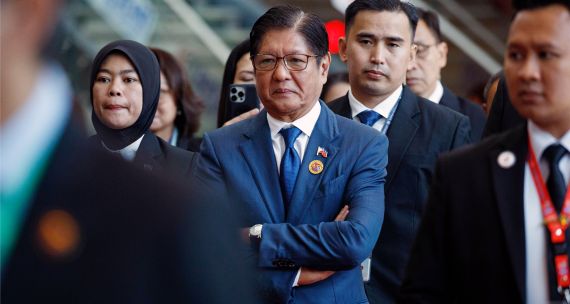On April 2, U.S. President Donald Trump, as part of his broader 'Liberation Day' tariff announcement, announced a hefty 46 per cent tariff on imports from Vietnam. Following the 90-day pause on reciprocal tariffs, Vietnam — like many other countries — has scrambled to negotiate with the U.S. through diplomacy and trade concessions.
It is a stark change of fortune from Trump’s first term, when Vietnam benefited from the fallout from U.S.-China trade tensions as manufacturers sought to diversify their manufacturing and production sites to other markets, Vietnam foremost among them. This time, however, with an economy still heavily dependent on exports — especially to the U.S. — and a manufacturing sector closely intertwined with Chinese supply chains, Vietnam faces heightened exposure to a renewed wave of U.S. tariff threats and an escalating U.S.-China trade dispute.
As the country looks to reduce this vulnerability and diversify trade, what are its opportunities and challenges, and how might Canada position itself as a reliable and strategic partner for Vietnam’s continued growth?
What is Vietnam’s trade exposure to the U.S. versus China?
Vietnam’s economy relies heavily on trade, with exports to the U.S. contributing significantly to its GDP. As of 2024, Vietnam recorded a significant trade surplus with the U.S. of approximately C$170.6 billion — Vietnam’s largest deficit globally — highlighting the U.S. as a critical destination for Vietnam’s high-value exports such as electronics, apparel, and footwear. In contrast, Vietnam runs a substantial trade deficit with China, importing nearly C$200 billion worth of goods while exporting C$84.5 billion. Vietnam relies heavily on China for essential production inputs, including raw materials and components such as machinery, electronics, and industrial chemicals, used by its manufacturing sector. Vietnam remains China’s top ASEAN trading partner and is its fourth largest globally, reflecting the country’s close integration into China’s supply chains.
In essence, Vietnam depends heavily on China for production inputs, while the U.S. is an irreplaceable market for its finished products. This trade profile makes Vietnam particularly sensitive to geopolitical or economic pressure from either power. As U.S.–China trade tensions continue to intensify, Vietnam has become increasingly entangled in their rivalry — compelled to assert its relevance and value to both major powers without aligning with either.
How has Vietnam responded to U.S. trade pressure and tariff threats?
Vietnam has taken a series of proactive measures to ease tensions and address trade imbalances. In March — prior to the announcement of Trump’s “Liberation Day” reciprocal tariffs — Vietnam unveiled plans to reduce duties on key American exports, including liquefied natural gas, automobiles, and agricultural goods. That same month, the country approved a trial phase for Elon Musk’s Starlink satellite internet, and granted SpaceX permission to operate in Vietnam through 2030.
Following the U.S. decision to impose 46 per cent tariffs on Vietnamese goods, Hanoi intensified its efforts to smooth relations through trade concessions and diplomacy. In direct response to Washington’s concerns about Chinese products being rerouted through Vietnam to evade U.S. duties, the Communist Party of Vietnam (CPV) implemented stricter regulations to verify the origin of goods used in its domestic manufacturing.
Ahead of the trade negotiations, the CPV encouraged Vietnamese businesses to ramp up purchases of high-value American imports as part of a broader effort to narrow the trade imbalance. Following the first round of negotiations on May 7, the atmosphere appeared optimistic — U.S. Trade Representative Jamieson Greer has described the ongoing talks as "fruitful", stating that the Vietnamese remained co-operative to reduce the trade deficit and ease restrictions on American imports.
While these trade concessions may help placate the U.S., they risk destabilizing Vietnam’s relationship with China. Any significant economic compromises to the U.S. could be met with Chinese retaliation. More importantly, given the deep integration of Vietnamese supply chains with China, economic backlash from Beijing, such as increased duties on Vietnamese goods or reduced Chinese investments, could significantly disrupt local Vietnamese industries. As a result, Vietnam walks a tightrope, seeking to assert its significance as an alternative manufacturing hub for the U.S. while carefully avoiding actions that suggest an economic or political alignment with Washington.
Opportunities and risks of closer trade ties with China
Vietnam has reaped substantial economic benefits from strengthening trade ties with China, including increased trade volume, foreign direct investment, and supply chain integration. As of 2024, China remains Vietnam’s largest trading partner, accounting for nearly one-third of Vietnam’s total trade. Economic relations between the two countries have grown stronger since the onset of the U.S.-China trade war during the first Trump administration.
Many manufacturers, including Chinese factories, have shifted production to Vietnam under the "China Plus One" trade and manufacturing diversification strategy, further boosting bilateral trade and investment flows. China was the country’s top investor in 2024, with approximately C$6.5 billion in foreign direct investment, accounting for one-third of all new investments in the country. This growing economic partnership has also led to deeper supply chain integration. China remains Vietnam’s primary source of production inputs, supplying nearly half of the raw materials and equipment used by Vietnamese manufacturers.
Vietnam’s close trade ties with China have drawn increasing scrutiny in Washington. Concerns persist that Chinese goods are circumventing tariffs by being rerouted through Vietnam. The April 2 announcement has reflected this unease, with Trump's senior trade adviser, Peter Navarro, alleging that one-third of Vietnamese exports consisted of Chinese goods relabelled as domestic products. While Vietnam has benefited from production relocation, studies suggest that the majority of the country’s exports to the U.S. involve added value within Vietnam rather than simple transshipment of Chinese products.
Vietnam is increasingly aware of the risks tied to its heavy reliance on China, particularly as U.S.-China trade tensions escalate. In response, the country has sought to diversify its trade partnerships. Vietnam’s push for diversification has also been driven by fears over Beijing’s use of its economic ties to influence foreign policy directions and territorial disputes with Beijing in the South China Sea.
In recent years, Vietnam has joined several global trade agreements, including the Regional Comprehensive Economic Partnership (RCEP) and the Comprehensive and Progressive Agreement for Trans-Pacific Partnership (CPTPP). As of October 2024, Vietnam is part of 17 free trade agreements, with two more currently under negotiation, including the Canada-ASEAN FTA. Despite these efforts, Vietnam has yet to find an alternative supplier for essential production inputs, making a complete decoupling from China neither practical nor feasible in the short term.
The non-U.S., non-China alternatives
Beyond the American and Chinese markets, key export destinations for Vietnamese exports include ASEAN nations, the European Union, Japan, and South Korea. In 2024, Vietnam also expanded its reach into African and South American markets, boosting trade with Argentina, Brazil, and South Africa. While most government efforts have concentrated on negotiating with Washington, Hanoi has urged domestic industries to reassess their supply chains and explore new markets. Vietnam’s Ministry of Industry and Trade has announced plans to support this shift by providing businesses with legal guidance and market intelligence on alternative export destinations.
Deepening its integration within ASEAN could help Vietnam reduce its reliance on the American and Chinese markets by boosting regional trade and broadening its supply chain partnerships. From January to November 2024, Vietnam exported goods worth C$46.7 billion to ASEAN, making the bloc its fourth-largest export destination. By tapping into ASEAN’s regional supply networks, Vietnam can source raw materials and components from other bloc members and reduce its dependence on China. A good example is Vietnam’s growing partnership with Malaysia — an emerging regional hub for semiconductor manufacturing and packaging — from which it imported C$5.6 billion in chipsets in 2024. These chipsets, a set of integrated circuits, play a crucial role in powering modern technology ranging from consumer electronics to military technology.
Deeper integration with ASEAN, however, is not without its limitations. ASEAN’s collective market remains smaller, with lower consumer purchasing power than the U.S. or China. Although regional trade can support Vietnamese exports, it cannot match the scale or value of trade with these major powers. Moreover, many ASEAN countries — such as Indonesia, the Philippines, and Thailand — export similar goods, including electronics, machinery, and agricultural products. This overlap intensifies regional competition and could limit Vietnam’s export growth opportunities within the bloc.
Deepening ties with Canada, Japan, and South Korea
Despite Vietnam’s diplomatic and economic overtures to the U.S., there is still no clear sign that Trump will reduce or remove the reciprocal tariffs once the 90-day pause lapses in July. If the tariffs persist, Vietnam may be forced to redirect its exports to alternative markets such as Canada. In 2023, Vietnam was Canada’s largest trading partner from the ASEAN bloc, with bilateral trade reaching C$14.1 billion in 2023. Both countries are also members of the CPTPP, which eliminates most tariffs on traded goods. Since the implementation of the CPTPP, Vietnam’s total exports to Canada have surged by 60 per cent, from C$5.3 billion in 2018 to C$12.4 billion in 2023. Moving forward, Canada and Vietnam are exploring pathways to strengthen bilateral trade in clean technology, infrastructure, and aerospace.
Beyond Canada, Vietnam continues to strengthen its position as a key alternative trade and investment hub globally. Under the “China Plus One” strategy, South Korean conglomerates such as Samsung and Hyundai have shifted some of their manufacturing operations to Vietnam, boosting both trade and investment. In 2024, South Korea became Vietnam’s second-largest investor and fourth-largest trading partner. In April 2025, both nations pledged to increase bilateral trade to C$209 billion by 2030, while also expanding co-operation in nuclear and LNG energy generation.
Vietnam is also deepening ties with middle powers Japan and India. In April 2025, Vietnam and Japan agreed to enhance co-operation in clean technology and semiconductor research, while jointly affirming their commitment to a global free trade order grounded in international rules. In 2024, Vietnam and India committed to raising bilateral trade to C$21 billion as part of their growing strategic partnership.
• Edited by Erin Williams, Senior Program Manager, and Ted Fraser, Senior Editor, APF Canada





